The Top Attractions in Vietnam
Are you're looking for the best sights to visit in Vietnam? You're at the right place! No matter if you prefer to visit tourist attractions or to relax at the beaches, you will find the information for your Vietnam vacation in this article. In order to help you plan your journey, we have prepared this list of the top sightseeing spots in Vietnam. For the first time travelers, we would recommend the following top sights for your consideration: Ha Long Bay, Cu Chi Tunnels, The Reunification Palace, Tran Quoc Pagoda, and the Royal Palace in Hue. You will see, planning your trip to Vietnam will be very easy!
Ha Long Bay
Made up of nearly 2,000 islands of all different shapes and sizes, Ha Long Bay in northeast Vietnam is a UNESCO World Heritage Site famous for its stunning seaside scenery. The area is filled with limestone islands, rock formations and natural caves, and the waters are home to beaches, lakes, colorful coral reefs, and swamp and mangrove forests. You will enjoy the colors in kayaks, and they can explore the deep caves, rock structures, and beautiful ponds. The bay is an extremely popular tourist sight in Vietnam.
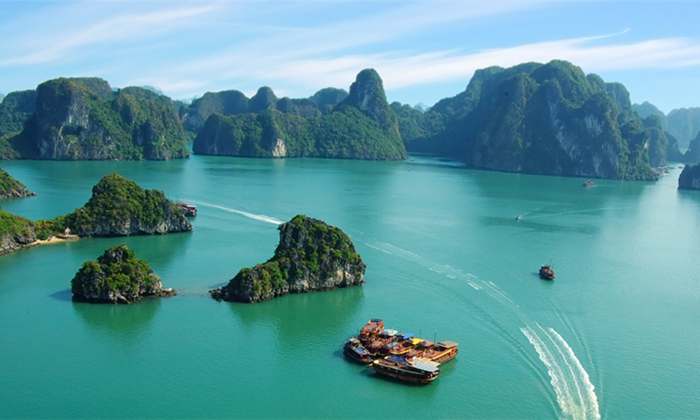
Cu Chi Tunnels
Under the ground 75 km northwest of Ho Chi Minh City lies the tunnels of Cu Chi. During the Vietnam War, Communist troops dug an extensive network of tunnels stretching from Saigon all the way to the Cambodian border. These tunnels were an important aid in the Viet Cong's fight against American forces. The Cu Chi complex is approximately 120 km of tunnels. During the war, this tunnel network contained living quarters, weapons facilities, hospitals, and other rooms that allowed the soldiers to stay underground for entire days. Visitors can now crawl through safe parts of the tunnels at two different sites: Ben Dinh and Ben Duoc.
The Reunification Palace
Also called Independence Palace, Reunification Palace is a famous landmark in Ho Chi Minh City. The site went through two wars against colonists from France and America. The Vietnam War ended here in 1975 when a North Vietnamese tank crashed through the palace's gates. The structure was built where the former Norodom Palace stood, and it was designed by architect Ngo Viet Thu in the 1960s architectural style. When Vietnam split north and south, the building was the president of South Vietnam's home.
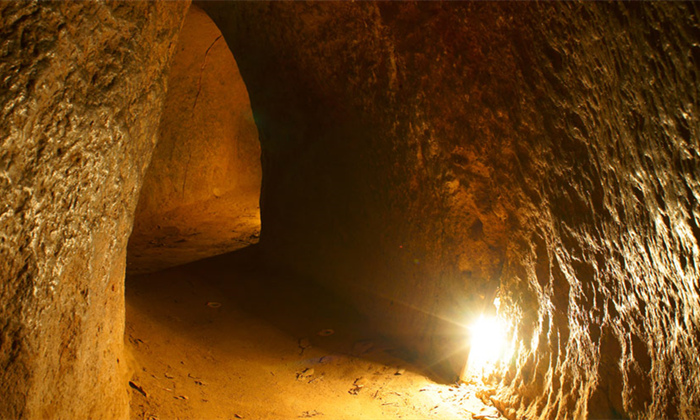
Ho Chi Minh Mausoleum
The Ho Chi Minh Mausoleum is a place where visitors and locals can pay their respects to the former president (who actually desired his body to be cremated). The site can be found in the central square of Hanoi. The building is the final resting place for the revolutionary leader who helped lead Vietnam in its efforts toward independence. Ho Chi Minh's embalmed body is seen in a marble structure, and it lies behind a well-guarded glass case in the central hall of the museum. Many visitors come to honor one of the world's most notable communist leaders.

Hue Royal Palace
On the northern bank of the Perfume River stands the historic Hue Royal Palace. It contains a system of ramparts, with Kinh Thang (Capital Citadel) on the outside, Hoang Thanh (Royal Citadel) inside of that, and Tu Cam Thanh (Forbidden Citadel) serves as the innermost structure. Each wall holds a series of other walls. The Purple Forbidden City has a moat, and this is the former spot of the emperor's home. In it, he built palaces, courtyards, and gates, and later pavilions and rooms were added. In the Royal Palace, visitors can see thrones of emperors from the Nguyen dynasty and decorated urns representing different kings.
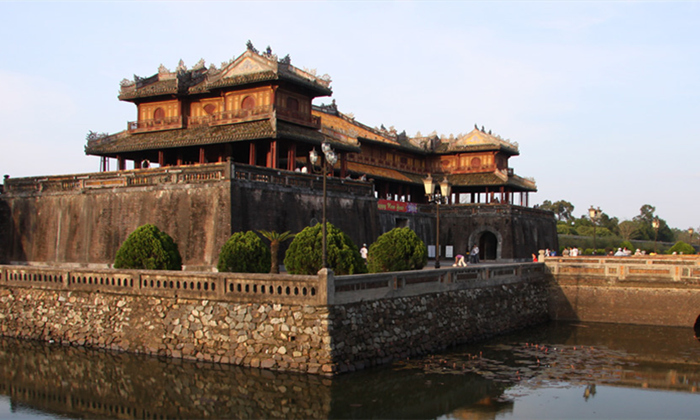
Tran Quoc Pagoda
For those travelers interested in Vietnamese culture, Tran Quoc Pagoda is a must-see. The pagoda is nestled on an island between the two most popular lakes in Hanoi, West Lake and Truc Bach Lake. It is the oldest pagoda in the city, built in the 6th century during the Emperor Ly Nam De's reign. Many monks live at the pagoda; they pray and teach Buddhism to the public. Visitors come to see the architectural and artistic elements from long ago and to burn incense in respect of the gods.
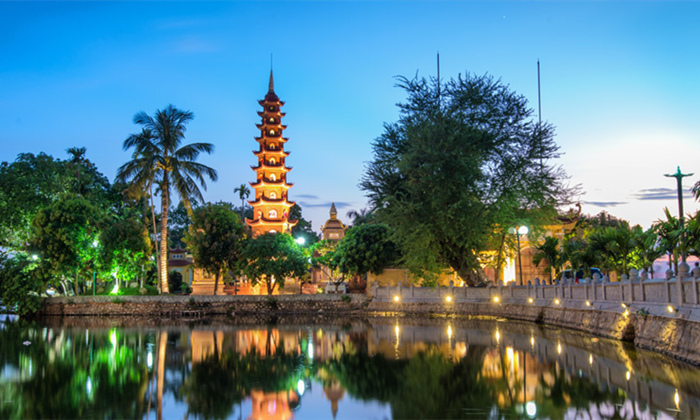
Tomb of Minh Mang
The imperial city of Hue is home to the Minh Mang Royal Tomb. This is the final resting place of the Nguyen dynasty's powerful second emperor Minh Mang, who reigned from 1820 to 1840 and was known for his strict Confucian policies. The emperor's son built the tomb after his death. It stands on Cam Ke Hill on the west bank of the Perfume River. The royal tomb is made up of a number of monuments lined up on either side of a straight path, and a high wall encloses it. Palaces, temples, and pavilions are seen on the grounds.
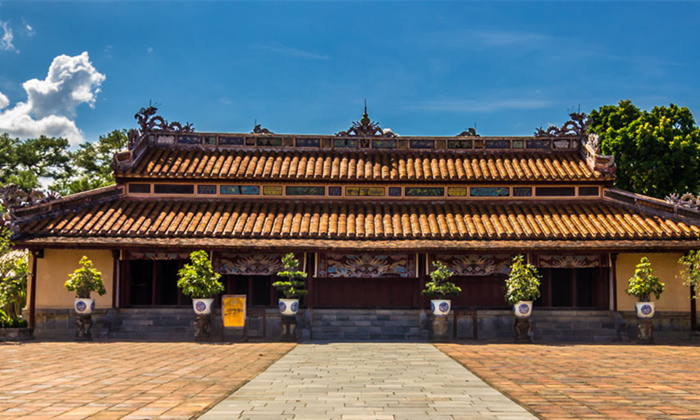
Dong Ba Market
The commercial center of the Hue area in Vietnam is the Dong Ba Market. The market lies along the edge of the Huong River beginning at Trang Tien Bridge and ending at Gia Hoi Bridge. Trade in this area was a vital part of Hue's economy in the past, and it is still important today. Many cultural souvenirs like hats, bronze structures, pottery, jewelry, and bamboo products can be purchased on the streets. Tourists observe local ways of trading and can try to negotiate for the right price. In addition, visitors can try a variety of delectable local dishes at the market's food courts.
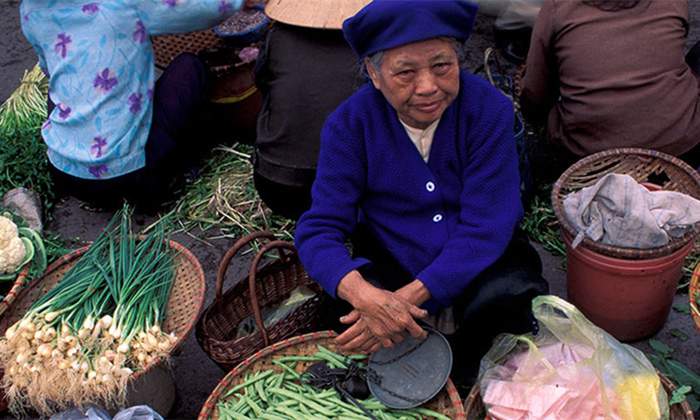
Are you're looking for the best sights to visit in Vietnam? You're at the right place! No matter if you prefer to visit tourist attractions or to relax at the beaches, you will find the information for your Vietnam vacation in this article. In order to help you plan your journey, we have prepared this list of the top sightseeing spots in Vietnam. For the first time travelers, we would recommend the following top sights for your consideration: Ha Long Bay, Cu Chi Tunnels, The Reunification Palace, Tran Quoc Pagoda, and the Royal Palace in Hue. You will see, planning your trip to Vietnam will be very easy!
Ha Long Bay
Made up of nearly 2,000 islands of all different shapes and sizes, Ha Long Bay in northeast Vietnam is a UNESCO World Heritage Site famous for its stunning seaside scenery. The area is filled with limestone islands, rock formations and natural caves, and the waters are home to beaches, lakes, colorful coral reefs, and swamp and mangrove forests. You will enjoy the colors in kayaks, and they can explore the deep caves, rock structures, and beautiful ponds. The bay is an extremely popular tourist sight in Vietnam.

Cu Chi Tunnels
Under the ground 75 km northwest of Ho Chi Minh City lies the tunnels of Cu Chi. During the Vietnam War, Communist troops dug an extensive network of tunnels stretching from Saigon all the way to the Cambodian border. These tunnels were an important aid in the Viet Cong's fight against American forces. The Cu Chi complex is approximately 120 km of tunnels. During the war, this tunnel network contained living quarters, weapons facilities, hospitals, and other rooms that allowed the soldiers to stay underground for entire days. Visitors can now crawl through safe parts of the tunnels at two different sites: Ben Dinh and Ben Duoc.
The Reunification Palace
Also called Independence Palace, Reunification Palace is a famous landmark in Ho Chi Minh City. The site went through two wars against colonists from France and America. The Vietnam War ended here in 1975 when a North Vietnamese tank crashed through the palace's gates. The structure was built where the former Norodom Palace stood, and it was designed by architect Ngo Viet Thu in the 1960s architectural style. When Vietnam split north and south, the building was the president of South Vietnam's home.

Ho Chi Minh Mausoleum
The Ho Chi Minh Mausoleum is a place where visitors and locals can pay their respects to the former president (who actually desired his body to be cremated). The site can be found in the central square of Hanoi. The building is the final resting place for the revolutionary leader who helped lead Vietnam in its efforts toward independence. Ho Chi Minh's embalmed body is seen in a marble structure, and it lies behind a well-guarded glass case in the central hall of the museum. Many visitors come to honor one of the world's most notable communist leaders.

Hue Royal Palace
On the northern bank of the Perfume River stands the historic Hue Royal Palace. It contains a system of ramparts, with Kinh Thang (Capital Citadel) on the outside, Hoang Thanh (Royal Citadel) inside of that, and Tu Cam Thanh (Forbidden Citadel) serves as the innermost structure. Each wall holds a series of other walls. The Purple Forbidden City has a moat, and this is the former spot of the emperor's home. In it, he built palaces, courtyards, and gates, and later pavilions and rooms were added. In the Royal Palace, visitors can see thrones of emperors from the Nguyen dynasty and decorated urns representing different kings.

Tran Quoc Pagoda
For those travelers interested in Vietnamese culture, Tran Quoc Pagoda is a must-see. The pagoda is nestled on an island between the two most popular lakes in Hanoi, West Lake and Truc Bach Lake. It is the oldest pagoda in the city, built in the 6th century during the Emperor Ly Nam De's reign. Many monks live at the pagoda; they pray and teach Buddhism to the public. Visitors come to see the architectural and artistic elements from long ago and to burn incense in respect of the gods.

Tomb of Minh Mang
The imperial city of Hue is home to the Minh Mang Royal Tomb. This is the final resting place of the Nguyen dynasty's powerful second emperor Minh Mang, who reigned from 1820 to 1840 and was known for his strict Confucian policies. The emperor's son built the tomb after his death. It stands on Cam Ke Hill on the west bank of the Perfume River. The royal tomb is made up of a number of monuments lined up on either side of a straight path, and a high wall encloses it. Palaces, temples, and pavilions are seen on the grounds.

Dong Ba Market
The commercial center of the Hue area in Vietnam is the Dong Ba Market. The market lies along the edge of the Huong River beginning at Trang Tien Bridge and ending at Gia Hoi Bridge. Trade in this area was a vital part of Hue's economy in the past, and it is still important today. Many cultural souvenirs like hats, bronze structures, pottery, jewelry, and bamboo products can be purchased on the streets. Tourists observe local ways of trading and can try to negotiate for the right price. In addition, visitors can try a variety of delectable local dishes at the market's food courts.

Related Articles You May Like
Most Frequently Asked Questions
Japan Office
- Tel: +81 50-3701-6391
- Email: info@japanholiday.com
- Working Hours: 8am-7pm, (Japan)
USA Office
- Tel: +1-6265617117
- Email: info@japanholiday.com
- Working Hours: 8am-7pm, Pacific Time

